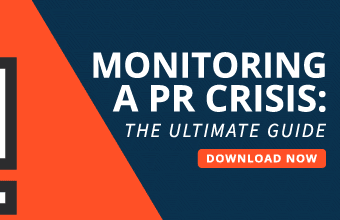Businesses that maintain silence and avoid confronting a crisis are essentially leaving it up to the court of public opinion to choose their fate—but taking a proactive approach by filling every available communications channel with the proper messaging, including positive news content and solutions, will help overcome negativity stemming from a communication vacuum—and may ultimately determine your businesses’ survival.
This year, we’ve been coping with a global health pandemic, a national economic shutdown, and social unrest in cities large and small—three simultaneous crises that have put immense pressure on businesses and organizations to engage audiences more frequently and with more content. However, new research from JoTo PR found that nine out of ten in-house communication leaders say they have experienced regular challenges with content creation.
It’s crucial that communications during crises be handled with different, yet consistent messaging. “Businesses need to know that they must rise above the noise of the bad news and fill the vacuum on proactive, and innovative solutions to ‘out-create’ the negativity,” said Karla Jo Helms, chief evangelist and anti-PR strategist for JOTO PR Disruptors, in a news release. “Get on every channel of communication that will carry your message. Communication is life. No communication is death.”
Recent crises have inspired organizations to handle communications themselves, but have seen their efforts rapidly spinning out of control
For example, there’s CrossFit founder and CEO Greg Glassman’s now infamous tweets regarding George Floyd. Other examples of failed messaging during past PR crises can give insight into what went wrong in organization’s communications and the resulting PR nightmares:
- After two Boeing 737s crashed within months of each other, instead of addressing the problem, the aircraft maker treated the tragedies like disgruntled customers, insisting there was no problem with their planes. They ultimately left their message up to public opinion. Boeing lost orders from airliners, and its stock price and revenue saw a tremendous drop.
- Facebook confronted immense public distrust after it was revealed the social media giant was allowing fake accounts to spread misinformation during the 2016 presidential election. Facebook also sold user data to outside groups for political research. Their first public comments said they were going to do nothing for the sake of free speech. They may have protected advertiser revenue in the move, but they sacrificed their integrity and trustworthiness.
- Apple was slow to respond to the discovery of a bug in their Facetime app’s software that allowed callers to listen in on people they called. Apple’s initial lack of crisis communication gave the media plenty of time to amplify the story.
“People naturally mess up communication in a crisis when they do it on their own”, Helms added. “Everything you would normally do to defend your reputation when personally attacked is frequently the very opposite thing to do when managing the court of public opinion. Crisis management is governed by certain communication laws… don’t make the mistake you can ‘handle it yourself’ or ‘ride it out’. You will fail.”
Boeing, Facebook, and Apple, all giants in their respective industries, are still subject to these communication laws. Instead they chose inaction and paid the price
Their actions resulted in reduced revenue, sullied reputation, and the loss of the public’s trust. They became part of news cycles that could have been spreading very different messages had they taken their crisis to the professionals. Regarding the media’s role in these crises, Helms further states, “Their job is to report the news. So, make the news. Don’t wait on them to report it. Give them news to report.”
Also consider the internal team. Excessive exposure to outside negativity can unduly influence team members’ attitudes, leading to troubles. Therefore, first sequestering off the negativity monitoring to a specific hat will keep team members focused and helping to meet a common goal rather than the bad news. Helms concludes, “Everyone in the company has a ‘crisis hat’ during a crisis. Times like these are no different.”
Helms recommends not just more communication, but a purposeful, strategic communications plan that has a message that stands the test of time. “The size of your communication reach and the volume of messaging to it will determine your survival—revenues, goodwill, sales, and more,” she said.
This article was originally published on August 14, 2020 and republished on March 9, 2021.








